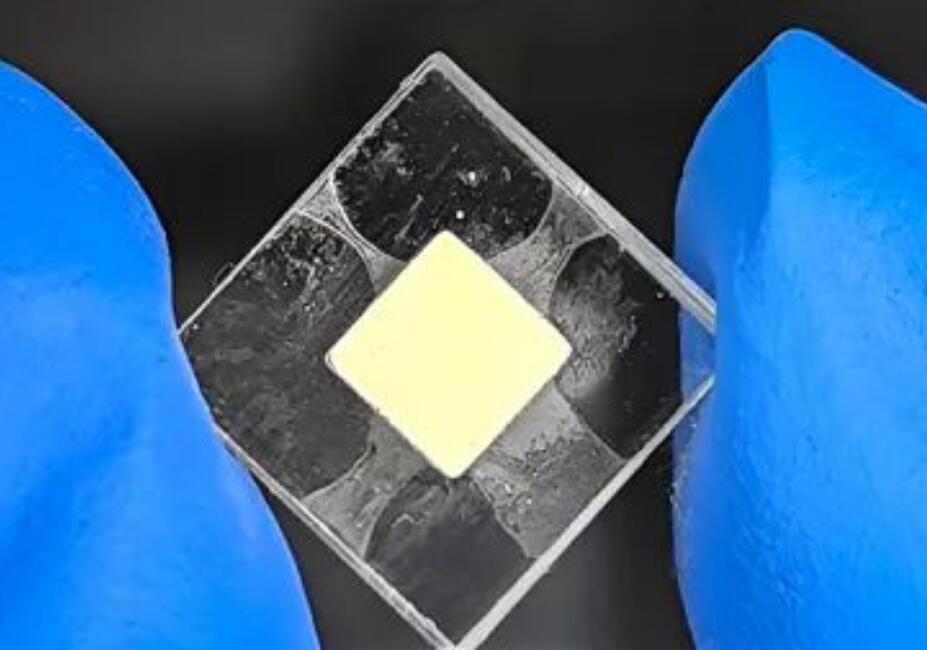Recently, the team of Professor Wang Shuao and Professor Wang Yaxing from the State Key Laboratory of Radiation Medicine and Radiation Protection of Soochow University, together with researchers from the School of Nanoscience and Technology of Soochow University, Xi’an Institute of Advanced Technology, Northwest Institute of Nuclear Technology, Xiangtan University, etc., proposed a structural design concept of actinide micronuclear battery based on “built-in energy converter” (Figure 1). By coupling the molecular level of actinide elements with luminescent lanthanide elements, the efficiency of converting radioactive nuclide decay energy to light energy was increased by nearly 8,000 times, and the most efficient radionuclear battery known to date was assembled.
The research results “Micronuclear battery based on a coalescent energy transducer” were published in Nature.
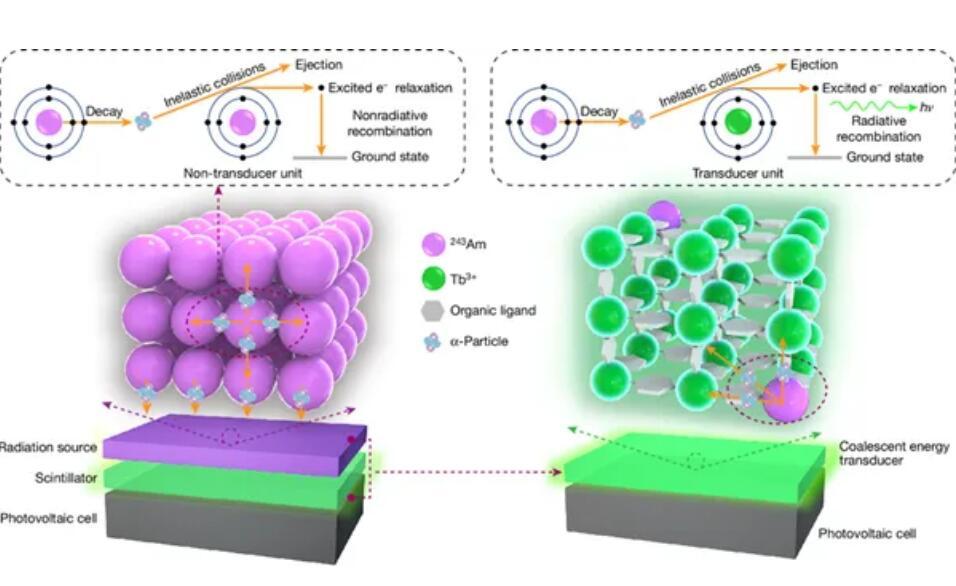
Micro-nuclear batteries are devices that convert radioisotope decay energy into electrical energy. Thanks to the fact that radioisotope decay is not affected by the external environment, micro-nuclear batteries have become a long-lasting and indispensable energy solution in many application scenarios where traditional batteries are difficult to handle or face challenges.
Actinide nuclides, especially transuranic nuclides such as 241Am/243Am, are the main contributors to long-term radiotoxicity in nuclear waste. Their extremely long half-life and α (alpha) decay energy of up to megaelectronvolts have prompted researchers to explore the possibility of developing actinide micro-energy. However, in the traditional micro-nuclear battery configuration, the severe self-absorption effect hinders the conversion of actinide α decay energy, making the development of efficient actinide radioisotope micro-nuclear batteries extremely challenging.
In response to this problem, the radiochemistry research team of Suzhou University led by Wang Suwa proposed a “built-in energy converter” based on its series of research progress in the fields of actinide solid chemistry, separation chemistry, environmental chemistry and protective chemistry. The actinide micro-nuclear battery architecture, in which the actinide nuclide 243Am and the luminescent lanthanide element Tb3+ are co-assembled into a crystalline coordination polymer, and the distance between them is within the angstrom range, thus realizing the integration of radionuclides and Coupling of energy conversion units at the molecular level (Fig. 1 right).
The alpha particle energy generated by the decay of 243Am can be extremely efficiently deposited on the surrounding lanthanide elements, thereby producing significant radioluminescence phenomena. Using only 11 μCi of radionuclide, the research team observed visible autoluminescence induced by irradiation within 243Am in the built-in energy converter. Subsequent experiments determined that the self-luminous power was 11.88 nW, and the conversion efficiency from decay energy to light energy was as high as 3.43%.
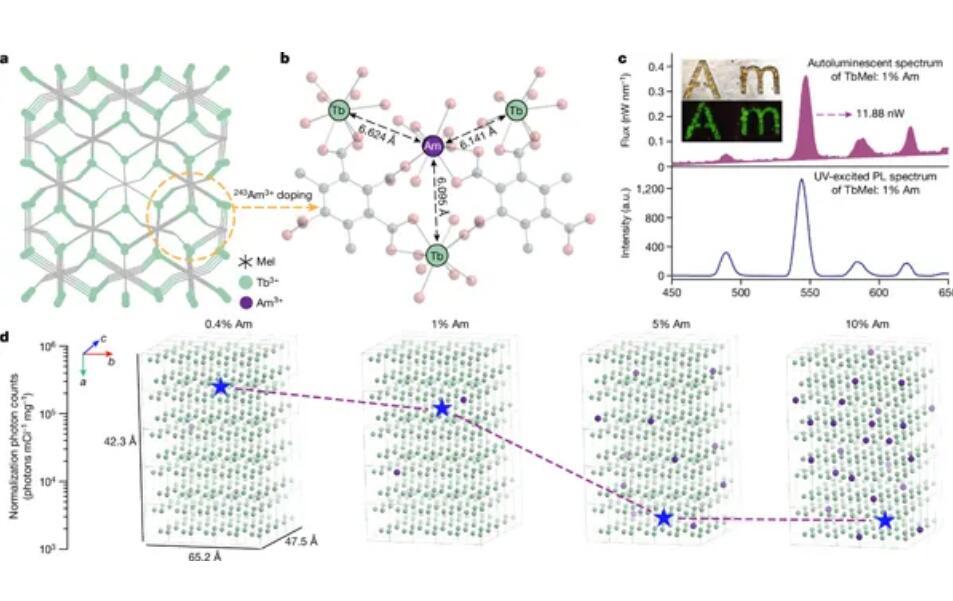
The research team further verified that the built-in energy converter can significantly improve energy conversion efficiency through experimental measurements and theoretical simulations. Experimental results show that the energy conversion efficiency from decay energy to light energy in the radionuclide built-in mode is nearly 8,000 times higher than that of the traditional structure.
Monte Carlo simulation results also show that in the built-in radionuclide mode, the flux and average energy of α particles are significantly greater than the traditional external radioactive source mode (Figure 3). In addition, the built-in energy converter also exhibits excellent structural stability and luminescence stability. Combining it with photovoltaic cells can convert long-term stable self-luminescence into electrical energy output.
Based on this, the research team developed a new actinide micro-radiation photovoltaic nuclear cell, achieving a current record-breaking total energy conversion efficiency of 0.889% and a unit activity power of 139 μW·Ci-1. At the same time, the performance parameters of the micro nuclear battery showed almost no degradation during 200 hours of continuous operation (Figure 4). As one of the important breakthroughs in the field of nuclear batteries in recent decades, this achievement opens up a new direction for the resource utilization of actinide nuclides in the field of non-nuclear fuel cycles.
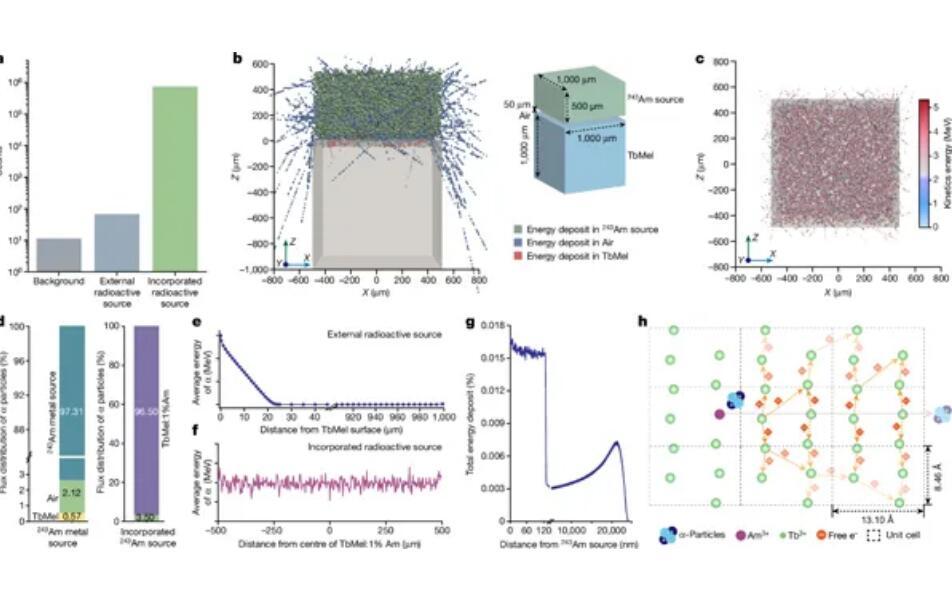
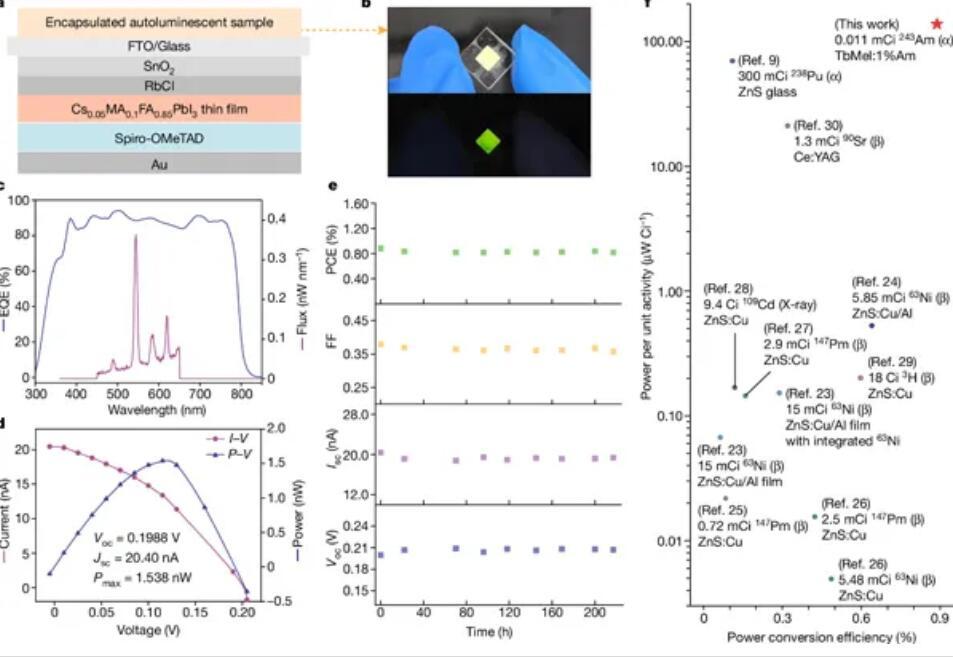
Li Kai, associate researcher at the State Key Laboratory of Radiation Medicine and Radiation Protection, Soochow University, Yan Congchong, associate professor, and Wang Junren, a doctoral student, are the co-first authors of the paper. Wang Shuao and Wang Yaxing from Soochow University, and Academician Ouyang Xiaoping from the Northwest Institute of Nuclear Technology and Xiangtan University are the co-corresponding authors.
Academician Chai Zhifang and Associate Professor Sun Liang from Soochow University provided important guidance on the theory of radiation energy conversion. The research group of Professor Ma Wanli and Professor Yuan Jianyu from the School of Nanoscience and Technology of Soochow University provided experimental support for the screening and production of photovoltaic cells in this project. Associate Professor Ji Guoxun from the Xi’an Institute of High-tech Research made contributions to the testing of micro-nuclear batteries. This work was funded by the National Natural Science Foundation of China, Jiangsu Provincial Department of Science and Technology, and the New Cornerstone Science Foundation.
